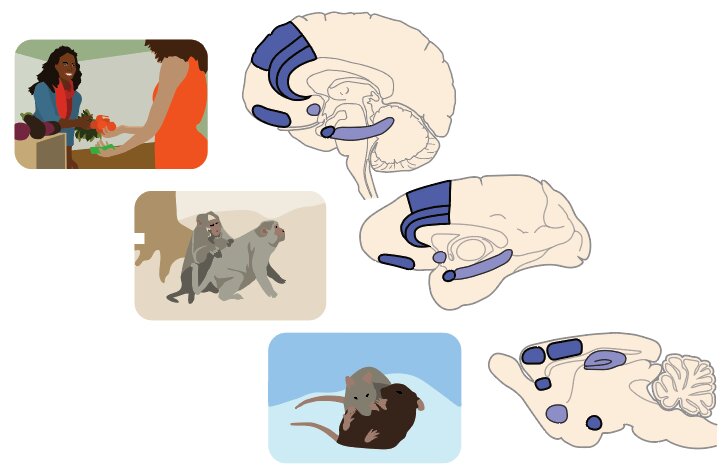In recent years, neuroscientists have been trying to understand the neural underpinnings of social behaviors and cognition. Studies on animal species, including primates and rodents, have identified a number of brain regions and neural circuits that may underpin social behaviors.
Researchers at Yale University have been conducting extensive research investigating the roles of the medial prefrontal cortex and the amygdala in social decision-making, particularly focusing on the interactions between different brain regions in the prefrontal-amygdala pathways. In a recent paper published in Nature Neuroscience, the researchers reviewed and summarized the evidence gathered in past studies that examined the neural mechanisms of social decision-making in humans, non-human primates and rodents.
“Recently, we published a study showing that there is specialized coordination between the medial prefrontal cortex and the amygdala when monkeys make prosocial decisions impacting the reward outcome of a conspecific,” Steve W.C. Chang, one of the researchers who carried out the study, told Medical Xpress. “To better understand and consolidate many interesting findings across humans, monkeys, and rodents, we wrote this new review with a hope of elucidating some common principles guiding the involvements of the prefrontal-amygdala circuits in social behavior.”
Overall, the findings reviewed by Chang and his colleagues highlight the crucial role of interactions between the medial prefrontal cortex and amygdala in the social cognition of a wide variety of animal species. The medial prefrontal cortex has previously been found to contribute to a number of sensorimotor, cognitive and emotional processes, while the amygdala is a region deep within the brain that integrates a number of emotions, emotional reactions and motivations.
Some recent studies also revealed that neural ensembles involved in the processing of information that is both related and unrelated to social communication can interact with one another. These interactions appear to facilitate or attenuate social functions, increasing or decreasing their prevalence over non-social functions.
“By covering the most exciting discoveries on this topic made in recent years across research on humans, monkeys, and rodents, we can now begin to conceptualize the evolutionarily conserved functions of the prefrontal-amygdala circuits in social cognition at the levels of cells, circuits and complex social behaviors,” Chang said. “This multi-level understanding from a systems neuroscience perspective is crucial and can only be possible by examining research across species with distinct research advantages.
In addition to summarizing recent findings that highlight the role of prefrontal cortex-amygdala circuits in social cognition and decision-making, Chang and his colleagues discussed the potential effects of the neuropeptide oxytocin on these circuits and thus potentially on social behaviors. Their review paper could guide and inform future studies on the topic, paving the way towards new discoveries about the neural underpinnings of social decision-making.
“It will be important to continue to causally test the roles of the prefrontal-amygdala circuits in social functions and to better understand how these functions are shared or not shared with other known functions of these circuits, such as those involved in regulating anxiety and learning,” Chang said.
Reviewing past neuroscience research that explores the neural mechanisms of aggression
More information:
Prefrontal-amygdala circuits in social decision-making. Nature Neuroscience (2020). DOI: 10.1038/s41593-020-00738-9
2020 Science X Network
Citation:
Exploring the role of prefrontal-amygdala brain circuits in social decision-making (2020, December 18)
retrieved 20 December 2020
from https://medicalxpress.com/news/2020-12-exploring-role-prefrontal-amygdala-brain-circuits.html
This document is subject to copyright. Apart from any fair dealing for the purpose of private study or research, no
part may be reproduced without the written permission. The content is provided for information purposes only.
